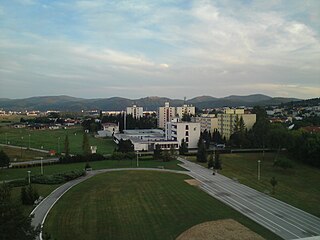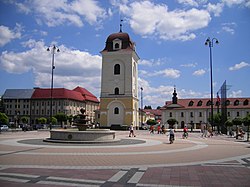
Kalinovo is a small village in Poltár District, in the Banská Bystrica Region of Slovakia.
Beňuš is a village and municipality in Brezno District, in the Banská Bystrica Region of central Slovakia.
Braväcovo is a village and municipality in Brezno District, in the Banská Bystrica Region of central Slovakia.
Bystrá is a village and municipality in Brezno District, in the Banská Bystrica Region of central Slovakia.

Čierny Balog is a municipality in Brezno District, in the Banská Bystrica Region of central Slovakia.
Dolná Lehota is a village and municipality in Brezno District, in the Banská Bystrica Region of central Slovakia.
Drábsko is a village and municipality in Brezno District, in the Banská Bystrica Region of central Slovakia.

Horná Lehota is a village and municipality in Brezno District, in the Banská Bystrica Region of central Slovakia.

Hronec is a village and municipality in Brezno District, in the Banská Bystrica Region of central Slovakia.
Jarabá is a village and municipality in Brezno District, in the Banská Bystrica Region of central Slovakia.
Jasenie is a village and municipality in Brezno District, in the Banská Bystrica Region of central Slovakia.

Osrblie is a village and municipality in Brezno District, in the Banská Bystrica Region of central Slovakia. The village is best known for biathlon races, with Biathlon World Cup events taking place since the mid-1990s and with one Biathlon World Championships in 1997. It also hosted the biathlon event at the 2015 Winter Universiade.

Čerenčany, is a village and municipality in the Rimavská Sobota District of the Banská Bystrica Region of southern Slovakia. During the past several years the village recorded a growth in population, due to which new houses and condominiums were built. The village is gradually taking the name of a satellite village in Rimavská Sobota. Most important sightseeing in the village is classical evangelical church built in 1831.
Ďubákovo is a village and municipality in the Poltár District in the Banská Bystrica Region of Slovakia.

Klenovec is a village and municipality in the Rimavská Sobota District of the Banská Bystrica Region of southern Slovakia. The village had been once a residency of Juraj Jánošík, a legendary Slovak folk hero. Near Klenovec is a big water reservoir. Most important sightseeings are classical houses from the beginning of 19th century and a classical evangelical church.

Horné Zahorany is a village and municipality in the Rimavská Sobota District of the Banská Bystrica Region of southern Slovakia. Village is a birthplace of Slovak writer Ľudovít Kubáni. Among the cultural sightseeings are classical evangelical church and a belfry from 1790.

Kosihovce is a village and municipality in the Veľký Krtíš District of the Banská Bystrica Region of southern Slovakia.
Chrastince is a village and municipality in the Veľký Krtíš District of the Banská Bystrica Region of southern Slovakia.
Čelovce is a village and municipality in the Veľký Krtíš District of the Banská Bystrica Region of southern Slovakia.

Kováčová is a spa village in Central Slovakia, best known for its hot springs.


















